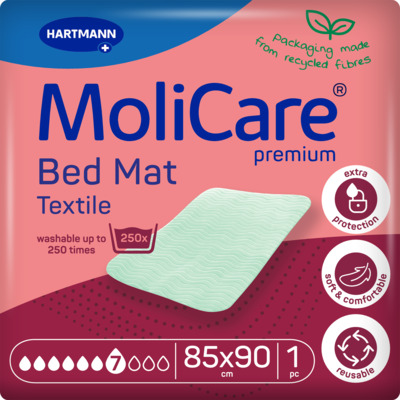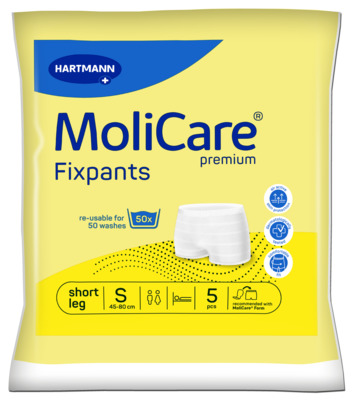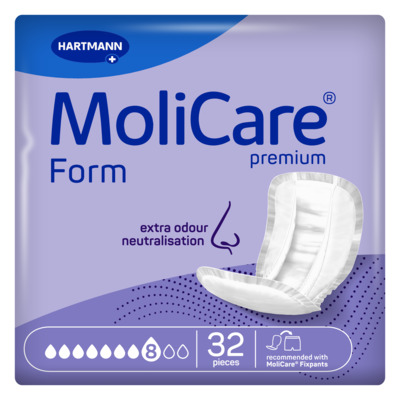Active living
Benefits of Yoga For Over 50s With Incontinence
Yoga is associated with many health benefits, both physically and mentally, allowing those who practice it to enhance their flexibility and reduce stress levels. Yet, a lesser-known advantage of yoga is its remarkable ability to strengthen the pelvic floor muscles, offering a natural method for enhancing bladder function. In this article, you will learn about the many benefits of yoga for over 50s with incontinence, and we will highlight how yoga can be a pivotal tool in managing incontinence, as well as the yoga positions that target the pelvic floor muscles.
Be sure to sign up to our mailing list to receive our latest articles and offers.

Yoga for Incontinence
Embracing yoga in your daily routine can greatly aid in managing incontinence. Many people find solace in yoga's gentle yet effective approach to improving bladder control and overall pelvic health. Yoga for over 50s is not just about achieving a state of calm; it's about empowering the body to maintain balance, strength, and flexibility in areas most needed.
When considering the dynamics of bladder muscles, the objective is not to cultivate tension but to foster a supportive yet relaxed state. This nuanced balance is crucial for optimal bladder function and is where yoga's magic shines. By integrating specific yoga poses into your routine, you can both strengthen and soften the pelvic floor muscles, leading to significant improvements in managing incontinence.
It's advisable to consult with a healthcare professional before beginning yoga if you have a chronic health condition or if you are pregnant too, ensuring yoga is suitable for your individual health needs. You can also learn more about how yoga works before continuing.
Learn more about strengthening the pelvic floor for women now.
The Unexpected Benefits of Yoga
Still not convinced about the benefits of yoga for those over 50 with incontinence? Here are some additional factors to consider.
Mindfulness and familiarity
By fostering a heightened sense of bodily awareness, yoga can allow you to recognise early signs of incontinence, allowing for timely action.
Aid mental health
Mental well-being is integral to managing incontinence, and yoga serves as a powerful ally in this regard. The combination of meditation, mindful breathing, and physical poses offers a holistic approach to stress reduction, relieving physical tension that can exacerbate symptoms of incontinence.
Improved physicality
Strengthening the core and pelvic floor muscles is vital, and yoga's diverse poses target these areas effectively, supporting bladder control. Additionally, yoga can be a catalyst for weight management. Excess abdominal weight increases pressure on the bladder, intensifying incontinence symptoms. By facilitating weight loss and promoting a healthier physique, yoga not only aids in controlling incontinence but also improves overall health and longevity.
Perform yoga comfortably and confidently with our range of pull up pants, perfect for other sporting activities too.
Benefits of Yoga for Over 50s with Incontinence
- Yoga for Incontinence
- Unexpected Benefits of Yoga
- 10 Yoga Poses for Incontinence
- The Child Pose
- Legs up the wall pose
- Reclined Bound Angle Pose
- Squat Pose
- Chair Pose
- Triangle Pose
- Mountain Pose
- Supported Bridge Pose
- Reclined Cobbler's Pose
- Corpse Pose
- Maintaining a Strong Pelvic Floor for Better Control of Incontinence
- FAQs
- Sources
10 Yoga Poses for Incontinence
Here are our recommendations for the best yoga poses to aid incontinence. Please ensure that when performing these that you have your own yoga mat. A standard yoga mat is typically about 68 inches long and 24 inches wide, which works well for most people. However, if you are taller or prefer extra space, you might opt for a longer mat, ranging up to 72 inches or even 84 inches in length. The width can also vary, with extra-wide mats being about 30 inches across.
If performing yoga at a gym, it is more preferable to use your own rather than a commercial one. If you are using a commercial yoga mat, be sure it is thoroughly cleaned and sterilised beforehand.
- The child’s pose (Balasana):
How to perform:
Position yourself on your knees, spacing them as wide as your mat while your toes meet. The size of the mat should ideally be a bit larger than your body's length when stretched out and wide enough to accommodate your arms when they are extended in front of you.
Lean forward, threading your hands in front of you, and allow your lower body to settle between your thighs, gently placing both your forehead and nose against the mat.
Stretch your arms out in front of you, pressing your hands firmly down, and directing your hips back towards your heels.
With your eyes closed, take deep breaths.
Time performing: Maintain this position for one minute.
Why this is effective: A flexible pelvic floor is crucial for its strength. This posture facilitates the opening of the lower back region, promoting the ability of the pelvic floor to both extend and contract with each breath, enhancing its flexibility and function.

2. The legs up the wall (Viparita Karani)
How to perform:
Position yourself seated on the floor, aligning your body's side closely with the wall.
Gently lift your legs to rest against the wall as you recline, easing your back and head down to the floor, ensuring your legs remain extended.
Open your arms to the sides, palms turned upward.
Shut your eyes and engage in deep, calming breaths, settling into the position.
Time performing: Sustain this for one minute.
Why this is effective: This posture alters gravitational effects, exerting slight pressure on your diaphragm. This adjustment enhances your ability to breathe deeply, encouraging the pelvic muscles to relax comprehensively and mitigating concerns about involuntary leakage.

3. The reclined bound angle pose (Supta Baddha Konasana)
How to perform:
Recline on the mat, bending your knees while keeping your feet planted on the ground.
Press the soles of your feet together, letting your knees drop outward.
Place your arms at your sides, palms facing skyward.
With your eyes closed, take deep, steady breaths.
Time performing: Maintain this posture for one minute.
Why this is effective: The flexibility of your inner thighs plays a crucial role in supporting your pelvic floor. As these muscles become more pliable, you gain enhanced control and deeper activation of your pelvic floor muscles.

4. The squat pose (Malasana)
How to perform:
Position your feet at roughly the width of your mat, toes just beyond its edge, but with your heels remaining on it.
Gently bend at the knees, lowering yourself into a squat.
Open your thighs a bit wider than your body, using your elbows to press against your inner thighs while joining your palms in front of your heart.
Extend your spine downward through your tailbone while elevating the top of your head towards the sky.
Engage in deep breathing.
Time performing: Maintain this stance for one minute.
Why this is effective: Engaging in this posture stretches the pelvic floor muscles, enhancing their ability to contract with greater strength.

5. The chair pose (Utkatasana)
How to perform:
Position your feet hip-width apart, parallel to each other.
Bend your knees, ensuring they don't extend past your toes, and extend your arms overhead, aligned with your upper body.
Aim for your thighs to be parallel to the floor.
Time performing: For beginners, perform for 20-30 seconds. After becoming more comfortable with the pose, you can gradually increase the time to 45 seconds, or even up to 60 seconds.
Why this is effective: The chair pose strengthens the thighs and core muscles while improving balance and concentration.

6. Triangle pose (Trikonasana)
How to perform:
Stand with your feet wider than shoulder-width, to form a triangle shape, with the floor being one edge. Turn one foot out by 45 degrees - so it is pointing to the side.
Extend your torso towards the turned-out foot, arms reaching out to form a vertical line, perpendicular to the floor.
Time performing: Beginners should start by holding the pose for about 15 to 30 seconds on each side. Once comfortable, extend the duration to 45 seconds, and eventually up to 60 seconds.
Why this is effective: The triangle pose stretches and strengthens the thighs, knees, and ankles while reducing stress and stimulating abdominal organs.

7. Mountain pose (Tadasana)
How to perform:
Stand with your feet together, toes pointing forward.
Lift your body, shoulders, and head to straighten the spine; no slouching.
Keep your arms by your side with your palms facing forward.
Time performing: You may hold this position for a few breaths, roughly 30 seconds to 1 minute. However, if you're focusing on Tadasana to specifically work on posture, balance, and grounding, you can hold it for a longer period, no more than 2 minutes.
Why this is effective: The mountain pose promotes posture and balance, revitalises the body, and helps to focus the mind.

8. The supported bridge pose (Salamba Setu Bandhasana)
How to perform:
Lie on your back with your shoulders on the floor, knees bent, and feet flat.
Clasp your hands under your hips for support and lift your body towards the ceiling.
Time performing: When starting out with this exercise, start with 1 - 3 minutes, and when comfortable, increase this to 5 minutes.
Why this is effective: The supported bridge pose strengthens the back, buttocks, and hamstrings while calming the brain and alleviating stress.

9. The reclined cobbler’s pose (Supta Baddha Konasana)
How to perform:
Start by lying flat on your back with your knees bent and the soles of your feet together, then lower your knees so they go outward.
Rest your arms at 45 degrees from your body, with your palms facing up.
Time performing: Aim to perform this exercise for no more than 5 minutes.
Why this is effective: The reclined cobbler’s pose opens up, the hips and groin, promoting relaxation and reducing stress and tension.

10. The corpse pose (Savasana)
How to perform:
Lie flat on your back, feet shoulder-width apart, toes pointing upward.
Arms extended by your side at a 45-degree angle, palms facing upward.
Time performing: For a shorter session, spend a maximum of 5 minutes performing this exercise, but for more intensity, you can increase it up to 10 minutes.
Why this is effective: The corpse pose is crucial for relaxation at the end of a yoga session, allowing the body to absorb the benefits of the practice and rejuvenate mind and body.
Keep your skin healthy and hydrated before and after you practice yoga with our exclusive skin care protection products.

Maintaining a Strong Pelvic Floor for Better Control of Incontinence
These yoga poses offer a pathway to improved pelvic health, demonstrating that yoga for over 50s is not only about maintaining general wellness but also about addressing specific health concerns like incontinence. Through consistent practice, you can discover the unexpected benefits of yoga, and enjoying improved physical health and a stronger, more resilient pelvic floor.
Don't let bladder or bowel problems prevent you from performing sports with incontinence.
FAQs
Can yoga help with incontinence?
Yes, yoga can help with incontinence by strengthening the pelvic floor muscles, improving bladder control, and reducing the frequency of incontinence episodes.
What is the difference between Kegels and yoga for treating incontinence?
Kegel exercises specifically target the pelvic floor muscles by contracting and relaxing them, which strengthens the muscles that support the bladder, which can improve bladder control. Whereas yoga takes a more holistic approach, focusing on breath awareness, alignment and mind-body connection. It is important to consult with a healthcare professional if you are unsure which one is best for you.
How does yoga help the urinary system?
Yoga helps the urinary system by strengthening the pelvic floor muscles, which can lead to improved bladder control and function. Yoga also promotes relaxation, reducing stress, which can exacerbate urinary problems.
Is yoga good for an overactive bladder?
Yes, yoga is good for an overactive bladder as it helps to reduce stress, which can trigger overactive bladder symptoms. It also strengthens the pelvic floor muscles, improving bladder control.

MoliCare® Premium Bed Mat Textile 7 drops
<p>The MoliCare® Premium Bed Mat Textile is our economic and durable water resistant mattress protector designed to make daily life with incontinence easier.</p>
MoliCare® Premium Fixpants Short Leg
<h2>Washable and durable</h2> <p>Embrace the convenience of washable and durable fixpants, designed to provide the best support and fit for your needs. These fixation pants are suitable for both women and men, providing a safe and secure hold for larger incontinence pads. With the two-piece system, you can trust that your pads will stay securely in place.</p> <p>Crafted from ladder-resistant dense material, these fixpants maintain their durability and integrity while keeping the pad's wetness indicator clearly visible. You can count on these pants to provide long-lasting support and comfort, for day and nightwear.</p> <h2>Skin-friendly and air-active material</h2> <p>Enjoy a high level of comfort with the soft waistband, skin-friendly and air-active material, and cross-elasticated threads for a close and comfortable fit.</p> <p>Experience optimum comfort with a choice of different leg lengths, ensuring you find the ideal fit that suits your body shape and preferences.</p> <p>With MoliCare® Premium Fixpants, you have a reliable and comfortable solution for keeping larger incontinence pads securely in place. Embrace the confidence and convenience of washable fixation pants, designed to provide the best support and fit for your needs. Say goodbye to worries and discomfort, and say hello to worry-free and comfortable days with MoliCare® Premium Fixpants.</p> <h2>Choosing your Size</h2> <p>Measure waist at the largest width between the waist and hips. Select the product size based on the below sizing.</p> <ul> <li>Small: 16-32 inches (45-80cm)</li> <li>Medium: 24-40 inches (60-100cm)</li> <li>Large: 32-48 inches (80-120cm)</li> <li>Extra Large: 40-64 inches (100-160cm)</li> </ul> <h2>Reliable delivery</h2> <p>We take care in the transportation of our products straight to your doorstep. Order from us and we will dispatch your items within 2-5 working days, and if you order over £50, you will receive free delivery.</p> <p>So stay comfortable during your everyday activities with the MoliCare® Premium Fixpants short leg range.</p>
MoliCare® Premium Form 8 Drops
<h2>Dermatologically tested incontinence pads</h2> <p>Experience comfort and protection against bladder weakness with MoliCare® Premium Form 8 Drops Pads. These pads are designed to provide you with exceptional comfort, tailored to your body's shape. Offering a range of absorbencies, they ensure the right level of protection for moderate to very severe incontinence. With elasticated seams to prevent urine from escaping from the side of the pad, these pads provide added security against leakages.</p> <h2>Absorbent Core Technology</h2> <p>At the core of these soft and breathable pads lies MoliCare®'s unique absorbent core technology, which effectively draws moisture away from your body, leaving your skin feeling dry. The soft textile-like backing sheet reduces rustling noise, while integrated odour neutralisers keep you feeling fresh and confident throughout the day. Dermatologically tested, we recommend pairing the MoliCare® Premium Form 8 Drops with our <a href="https://www.hartmanndirect.co.uk/incontinence-products/large-pads-and-fixation-pants" style="color:#0563c1; text-decoration:underline">fixation pants</a> for all-day comfort and security.</p> <h2>Convenient incontinence products</h2> <p>No matter the level of incontinence you experience, MoliCare® Premium Form 8 Drop Pads offer a convenient solution to confidently manage your needs. You can easily order our products online with the assurance of our price match promise and delivery straight to your doorstep. Enjoy free delivery on all orders over £50.</p> <p>If you require further assistance, our knowledgeable customer care team is available to answer any questions you may have. Contact us today at 0800 028 9470 and regain control of your life with MoliCare® Premium Form 8 Drops Pads.</p> <p>*Based on a study conducted among German nursing homes in 2021.</p>
